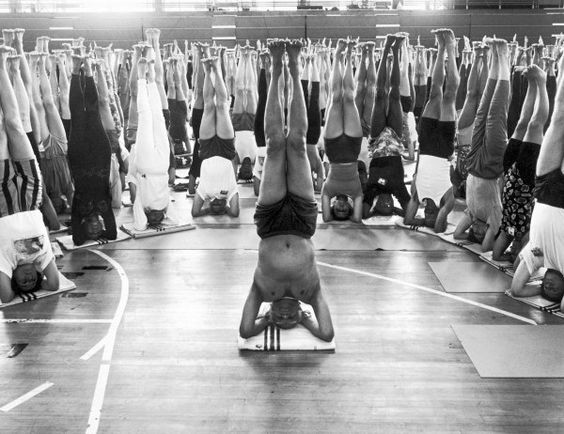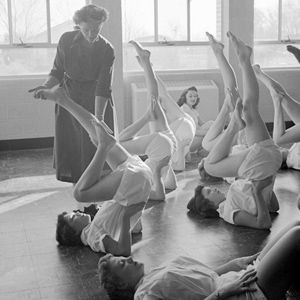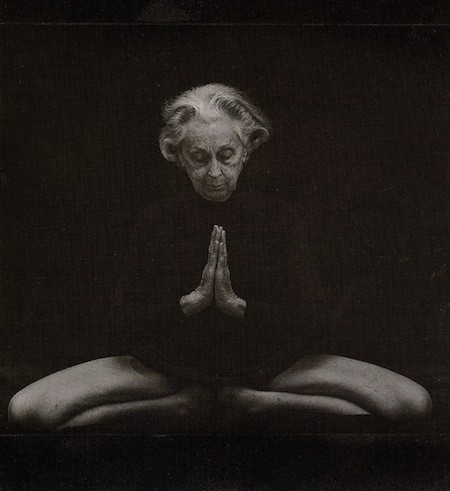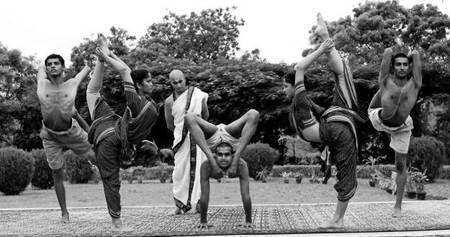Teaching, But Not Practicing.
As a teacher, we must never lose the capacity to be a student. Before teaching we were students, yoga practitioners, and we should always remain just that, practitioners. Sharing our experience with others is a byproduct of an accumulation of practical knowledge. If that knowledge never evolves, we just pass on a stale script.
Far too often I hear about yoga teachers who don’t study under a mentor or more often I hear about those who don’t actually have their own personal practice. Is this acceptable if we are teaching others?
Some of what I hear:
- “He never practices at home. He does the class with the students.”
- “I don’t think she ever really studied with a teacher. She’s the teacher.”
- “Since he opened the studio, he doesn’t have time to practice.”
- “Their schedule is so tight with all the travel, retreats and teacher trainings, there’s no time for practice. They already know their stuff though.”

If we teach others, our personal practice must come first, before money, before fame, before sainthood and martyrdom. Being a student is what got us on this path in the first place. Creating an intimate relationship with ourself, our feelings, strengths and weaknesses. How can that be given up? No amount of money or fans can replace deeply revealing quality time with ourself. We may not like what we see when we are alone, but should we then go use the teaching stage to avoid those issues and fulfill delusions of grandeur instead?
If we are not digging deeply into our limited and conditioned ways everyday on our own time, how can we say we practice yoga? How is it ok to teach others something we stopped doing ourselves? When we have no teacher we lose important, necessary feedback and an impartial assessment of our progress.
As a teacher, if we are not devoting an hour, at the very least 30 minutes, a day to an actual yoga practice, we may want to reconsider our motivation to guide others. I am referring to being all alone and practicing every single day some form of either prayer, physical postures or contemplation techniques.
This does not include an hour photo session spent filming ourselves instead. I mean being all alone, no music, no phone, no pets, no partners, no device, no distractions. That’s just the physical practice, the mental inquiries and observations happen all day long!
Teachers have a responsibility to keep their students safely progressing. Class time is not about us or our chance to get in a good stretch.
If the only time we practice is while teaching, we are avoiding actually practicing.
Either we have concluded that we already know or we are avoiding looking at ourselves and our own dramas. We are escaping being alone.
Yoga is practiced alone.
Doing yoga and practicing yoga are not the same.

As teachers, we should already be capable of doing what we are asking others to do and know it inside out and be able to transmit it in any form, whether physically, verbally, or through touch. A solid and consistent daily personal practice is required in order to be able to pass it on to others. If not, we are transmitting dead information, a mere memorization of some script learnt long ago that is parroted to paying customers who don’t know any better.
If we don’t have time for our own practice, what are we teaching others? Textbook knowledge? We become sound byte instructors who have not done enough personal work just projecting our derangements on everyone else under the guise of love and spirituality.
An instructor is not a teacher. The yoga world is full of instructors. Students are not clients nor dollar signs. Yoga is not a business. But that’s hard to recognize anymore. Looking at the state of yoga today, we see this has quite evidently already come to be. A billion dollar industry comprising of more instructors than students.
Doing the class with students has both its benefits and drawbacks. It is very helpful for students to see their teacher is actually capable of doing what is being asked of them to do. It gives them a sense of flow and rhythm to copy in the beginning. By physically doing the class with them they are riding on our energy and in a way we are doing it for them, carrying them along. But it can also wind up being all about the teacher’s skills and not the reality of the students’ level.
A teacher should equally be able to lead a class without having to physically do it. This way all the attention falls on the students.
Doing the class with students can lead to injuries on the teacher’s part. It is quite difficult to stay fully concentrated and connected to our own body while talking, trying to synch our breath, hold internal locks, perform poses and at the same time look around a classroom at others to make sure they don’t come to harm themselves. Asanas were not meant to be done while talking and proper respiration or attention cannot be attained when one is constantly giving verbal instruction. It puts stress on the throat, lungs and liver among other subtler things. Teaching has its side effects.

If a teacher has to physically do at least an hour of their own practice a day, plus physically do every group class and private session they teach, in addition to administrative duties, add on any other jobs they may have, as well as cook their own meals, they will quickly discover burn out or develop a deep seated Vata derangement.
I have owned a yoga studio for about 12 out of 20 years of teaching yoga. Early on I learnt that in order to not sacrifice my own practice required me to reduce the number of classes I taught. Six group classes, once a day only, was my maximum. This can allow for a morning and afternoon home practice. The first studio in Vancouver, BC was opened by my husband and we each taught six classes a week. Once we had other teachers we trusted, our schedule grew slowly and naturally, offering quality as opposed to quantity. We then gave it all up to pursue further studies with our teacher. Moving to Montreal, I find myself once again with a yoga studio, but no help as my husband gave up teaching all together. I don’t operate it as your typical studio with all day long classes and teacher trainings. I only teach when I want to and rent out the remaining time slots. I see it more as a practice space, a Shala, meaning abode or home of yoga.
If we choose to take on teaching more classes and doing more privates because we need the money more than we want to practice, perhaps it’s time to question what we are doing.
If paying rent is dependant on yoga income, teachings will be compromised to sell more scripts to clients. If covering bills is more a concern, then the answer is to get another job.
Don’t make yoga a job. Yoga is a craft and a calling, not a job.
If one teaches more than one practices, one has a different calling.
If business is more important than practice, we may want to reconsider both. Yoga should not be used as an occupation that one has to rely on to live. If we have been blessed with having it sustain our livelihood, we are lucky. But it will mean very little if we do not continue to learn and practice the craft.

What we teach should not be what we are practicing. Meaning we practice what we are just deciphering ourselves. If we have not yet established a solid understanding and ability in something, what’s the rush to teach it to others? Whatever you are asking others to do should already be so ingrained in your system, it will flow out naturally in whatever way it needs to get out. Offer information to students that you have personally spent many years exploring, testing, and to some degree, accomplishing.
We also can’t wait until we are perfect. Perfection will never arrive but our private home practice is what we are learning and should be kept to ourselves, not given away too quickly.
If we are not advocating the importance of a personal practice to all our students, we may just be in business to sell ourself and are robbing them of being independent, the single element required in yoga. Offer them an ongoing attempt at encountering their Self instead.
Teachers should not jump around to other’s classes and workshops just to collect tricks of the trade for their own teaching toolbox. To seek out a teacher and study with them for at least 3 years is an understanding that we are practitioners and we don’t know everything. It is a long-term commitment that offers priceless benefits of guidance and direction that is constantly challenging our limited mind and perceptions. The real work is always done at home, alone, on ourselves, in our personal and private practice.
We need a quiet place with no distractions to hear our mental chatter, to connect to our breath, to calm the activity, to slow down our heart and nervous system, to eventually stop all movement and find inner stillness. We can not be with others to do this. Although one may have encountered such an experience in a group setting, we must be alone to recognize what is ours and what we simply took from others.
Yoga is an individual’s shamanic journey. Nothing can replace our personal yoga practice, our connection with the Spirit that moves all things. It is our private conversations with god our creator, whoever that may be to us. It is the time to open ourselves up to hear and receive guidance and instruction. How can we listen if we are always the ones talking?
Radhasri (Rhonda Fogel) has been teaching yoga in Canada since 1998 and is the founder of Hatha Yoga Shala currently based in Montreal. She is an authorized Shadow Yoga teacher since 2005.
